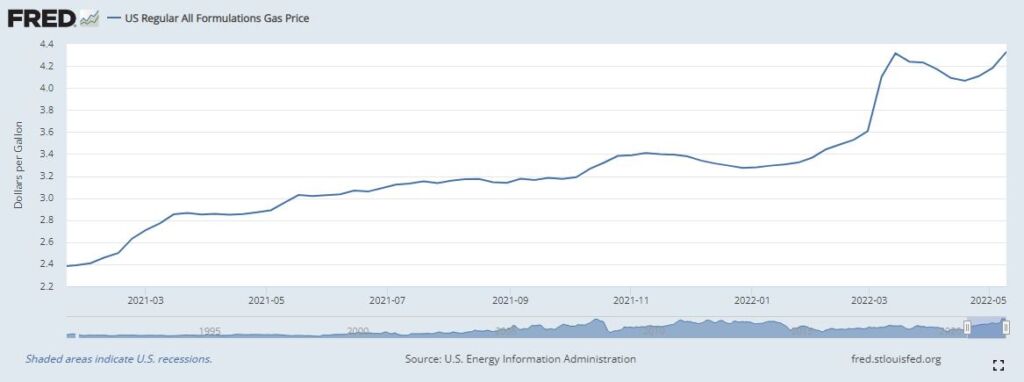Inflation eases slightly, but remains high
The Bureau of Labor Statistics (BLS) released figures for the Consumer Price Index (CPI) in April today. The good news was that the CPI increased by 0.3 percent in April, down from March’s increase of 1.2 percent, and that the year-on-year rate (April to April) came in at 8.3 percent, another decline from March when the rate was 8.5 percent. For the Midwest, the figures were 0.5 percent for the month and 8.2 percent for the year.
But there were some concerning signs below this headline figure. The BLS notes that “The index for gasoline fell 6.1 percent over the month, offsetting increases in the indexes for natural gas and electricity,” but gas prices have been ticking up again recently. On Monday they hit a new nominal — i.e., not adjusted for inflation — peak of $4.33 a gallon, as Figure 1 shows. This is 6.4 percent up from April 18, and this will be reflected in next month’s CPI numbers.
Figure 1: US Regular All Formulations Gas Price, January 2021 to May 2022

Another source of concern is that the ‘core inflation’ measure, which strips out volatile food and energy prices, “rose 0.6 percent in April following a 0.3-percent advance in March.”
Another BLS release today showed the impact this is having on ordinary Americans. Data for real earnings — that is, adjusted for inflation — showed that:
Real average hourly earnings for all employees decreased 0.1 percent from March to April, seasonally adjusted…This result stems from an increase of 0.3 percent in average hourly earnings combined with an increase of 0.3 percent in the Consumer Price Index for All Urban Consumers (CPI-U).
In short, higher prices exactly offset higher wages to leave the average American no better off (from April 2021 to April 2022 real average hourly earnings actually decreased 2.6 percent).
Yesterday, President Biden tweeted:
As the data show, more money in their pockets won’t be much help if prices keep going up.